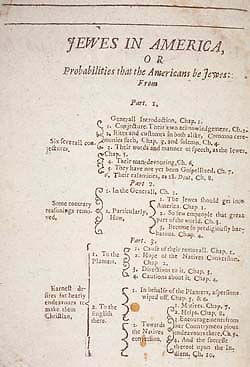Thomas Thorowgood (1595–1669) was a Norfolk minister who was sent as a delegate to the Westminster Assembly of Divines, which met from 1643 to 1649. Active in London during the mid-1640s, he was an associate of Hartlib’s collaborator, John Dury (see catalogue nos.66 and 67). Thorowgood was sympathetic to Presbyterian attempts to reform the Church of England, and, unlike Dury, refused to swear the Engagement oath (thought by many Presbyterians to breach the terms of earlier undertakings which they had given). Thorowgood depended for some years on the patronage of the Fairfax family, and, although he later acted in support of the regime during the mid-1650s, he claimed after 1660 to have been disillusioned with political affairs ever since the execution of Charles I in 1649. Some evidence for this assertion can be found in the publishing history of Iewes in America. The second edition of the work (published in 1660) contains a dedication to Charles II, which, according to testimony signed by Dury among others, was originally intended for Charles I. This dedication was suppressed in November 1648, and, when Thorowgood’s work was first published in 1650, it was addressed to the gentry of Norfolk.
Thorowgood was inspired by reports of the work of John Eliot (1604–90), minister of Roxbury, Massachusetts, who had begun to preach to the local Natick Indians in their own language in 1646. With the aid of the Corporation for Promoting and Propagating the Gospel among the Indians in New England (established with Parliamentary support in 1649), Eliot sought to establish ‘praying towns’ of Indian converts and potential converts. Eliot’s own letters, published in the second edition of Iewes in America, revealed the biblical and millenarian foundations of his work. He argued that Shem and his sons had journeyed eastwards from Ararat in the years following the landing of the Ark, whilst Ham and Japhet and their descendants had remained with Noah. Eventually, Nimrod had rebelled and set out with some followers in search of the site of Eden. Nimrod’s ambitions, culminating in the building of the Tower of Babel, had led to the dispersion of peoples, which had primarily affected the descendants of Ham and Japhet. Shem and his offspring had already obeyed God’s command to people the earth, and had occupied the eastern part of the world, including India, China, and the Americas.
According to Eliot, then, the native Americans were close relatives of the Jews, and their conversion would help to bring the whole world into the Christian fold and hasten the last days. This was an interpretation which Thorowgood echoed in Iewes in America, where (following Verstegan and others) he argued that language and custom held the key to the origins of nations. He suggested that the speech, legends, and customs of the native peoples of both North and South America indicated that they shared common ancestry with the Jews. He urged people to support Eliot’s work on the grounds that the Gospel had to spread to all nations, and the Jews convert to Christianity, before Christ would come again to judge and rule over his people.
Iewes in America contained a preface consisting of a letter by John Dury, dated 27th January, 1650. Here, Dury mentioned a number of travellers’ tales then circulating in Amsterdam, which told of the discovery of lost tribes of Jews. The most striking of these had been explained to Dury by Menasseh ben Israel (see catalogue no. 50) and described a tribe of lost Jews living in South America. Thorowgood included a translation of the full account of this episode, sent by Menasseh to Dury, at the end of Iewes in America. Dury’s preface took up the theme of the possible future conversion of the Jews, mentioning also the Jewish belief that the Messiah might come once the Jews were scattered to all the corners of the earth. According to both Dury and Thorowgood, the time was coming when the dispersion of peoples and the confusion of tongues would be reversed, and all God’s people would be called together to live under a single law.




